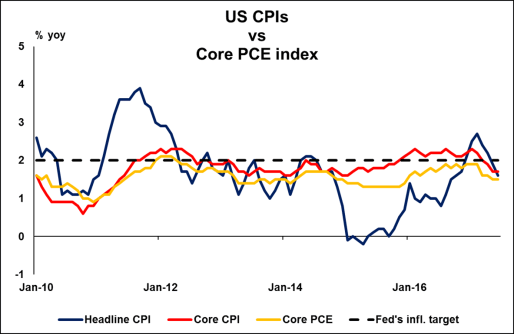Next week’s market movers
- The RBNZ is expected to take no action. We see the case for a more cautious narrative amid deteriorating economic data. The commentary on NZD could also signal heightened discomfort regarding the currency’s recent strength.
- In the US, the CPI prints for July will be closely watched as investors try to gauge the timing of the next Fed rate hike.
- In Abu Dhabi, OPEC and non-OPEC officials meet to discuss compliance over the production deal.
- We also get key economic data from New Zealand, China, and Norway.
On Monday, during the Asian day, the RBNZ will release its 2-year inflation expectations for Q2. Even though no forecast is available, this is a critical indicator that the Bank pays a lot of attention to. Remember that when this rate unexpectedly slipped in Q1 2016, it triggered a surprise rate cut, mainly to ensure that expectations do not become de-anchored from the target. As such, we will monitor this print closely, as any change could set the tone for the RBNZ meeting later in the week (see below).
During the European day, oil traders will probably turn their sights to Abu Dhabi, where OPEC and non-OPEC officials will meet to discuss why some countries are falling behind in their pledges to cut production as agreed in May. Any signals that the cartel may take a harder line on members not complying with their quotas, or that OPEC could take other steps to boost compliance, may help oil prices rebound.
On Tuesday, China’s trade balance for July is due to be released and expectations are for the nation’s trade surplus to have widened in USD terms. Both exports and imports are expected to have slowed slightly, but to still remain safely within the positive territory. However, we view the risks surrounding these forecasts as tilted to the upside. The case is supported by the nation’s official manufacturing PMI for July, where the New Exports Orders index rose from the previous month, and was higher than a year ago. What’s more, even though the import index ticked down from the previous month, it was still notably higher than a year ago, suggesting that the yearly imports rate may have risen as well.
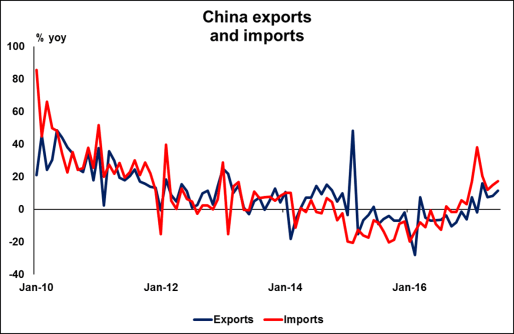
On Wednesday, the only major indicators we get are China’s CPI and PPI for July. Expectations are for both figures to have risen at the same pace as previously. The nation’s official and Caixin PMIs for the same month showed that both input prices and output charges rose at a faster pace than previous months. Specifically, in the Caixin surveys, input prices rose at the strongest pace in three months, and even though prices charged by firms rose at only a modest pace, it was still the fastest since March. Meanwhile, the official surveys suggest that we may even see an upside surprise in the yearly CPI and PPI rates, as both input and output prices rose at a faster pace than a year ago.
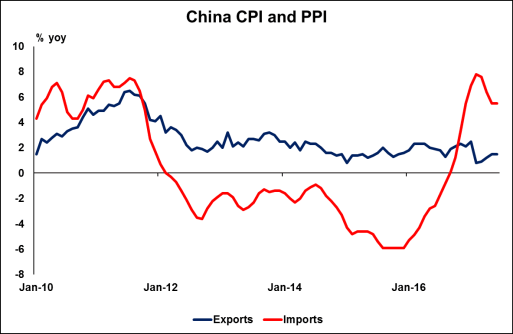
On Thursday, during the early Asian morning, the RBNZ will announce its policy decision. Without a forecast available yet, we see the case for the Bank to remain on hold once again. At its latest gathering in June, the RBNZ appeared somewhat optimistic, dismissing soft GDP growth in Q1 as being transitory and indicating that the growth outlook remains positive. Meanwhile, policymakers did not appear very concerned with the notable appreciation in NZD, simply noting that a lower NZD would help rebalance the growth outlook. However, ever since, economic developments have been relatively downbeat. The CPI rate for Q2 declined, and now lies well below the RBNZ’s own forecasts. Meanwhile the jobs market underperformed during the quarter, with the labor force participation dropping significantly. Adding insult to injury, the Kiwi is trading much higher than it was back then.
We believe that these soft data will probably keep the Bank from turning hawkish anytime soon. In case the RBNZ appears less optimistic on the economy, or if it revises down its economic forecasts, the latest pullback in NZD could continue as investors push further back their expectations for the timing of a rate hike by the Bank. Last but not least, we think there is a considerable probability that the RBNZ expresses greater discomfort with the strong NZD. Even though its currency-related language in June was mild, data have broadly deteriorated since then and the Kiwi has moved higher, a combination that will probably be worrisome. Our favorite proxy for exploiting further NZD weakness in the short run is EUR/NZD, given that we expect the euro to keep performing well as opposed to the greenback, which may continue bleeding, perhaps even more than the Kiwi.
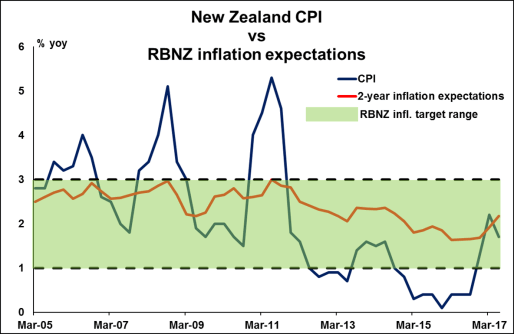
During the European day, we get Norway’s CPI data for July, though no forecast is available yet. Despite the steep slowdown in inflation, at its latest meeting the Norges Bank removed its easing bias and noted that it now expects the key policy rate to remain at the current level, while it revised slightly higher its rate path for 2017 and 2018. What’s more, the Bank noted that inflation is lower than expected and although it may continue to drift lower in the months ahead, increased activity and receding unemployment suggest that inflation will eventually pick up. Therefore, even if inflation slows again, it may not be particularly worrisome for policymakers, as it would still be in line with their outlook. Having said that though, our opinion is that at least the headline rate may have actually risen somewhat. We base that on the fact that the yearly change in oil prices has turned back positive in July.
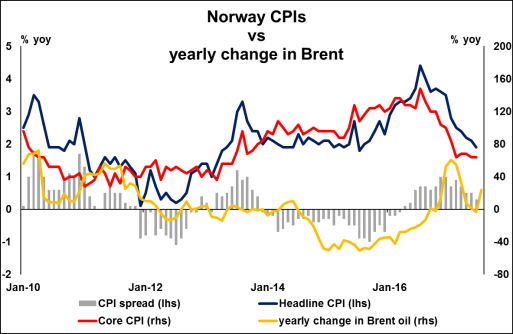
Finally on Friday, we will get the highly-anticipated US CPI data for July. These data will probably be closely watched, considering that both the headline and core CPI rates have declined significantly in recent months, pushing back Fed rate-hike expectations and dragging the dollar down. The forecast is for the headline rate to have ticked up, while the core rate is expected to have held steady. However, this combination makes us believe that the rise in the headline rate may be owed primarily to movements in volatile items, such as energy-related products and food. The yearly change in WTI is back to positive, adding validity to our view. As long as the core rate remains unchanged, we doubt that expectations for the next Fed hike will come forth on the release of this data set.
The longer inflation remains subdued, the less convincing the Fed’s view becomes that soft inflation is only transitory. If the CPI rates were to remain at current levels for the next months, the FOMC would likely have to acknowledge that low inflation is not owed only to temporary factors, implying officials may have to revise down the implied policy path, also known as the "dot plot".
